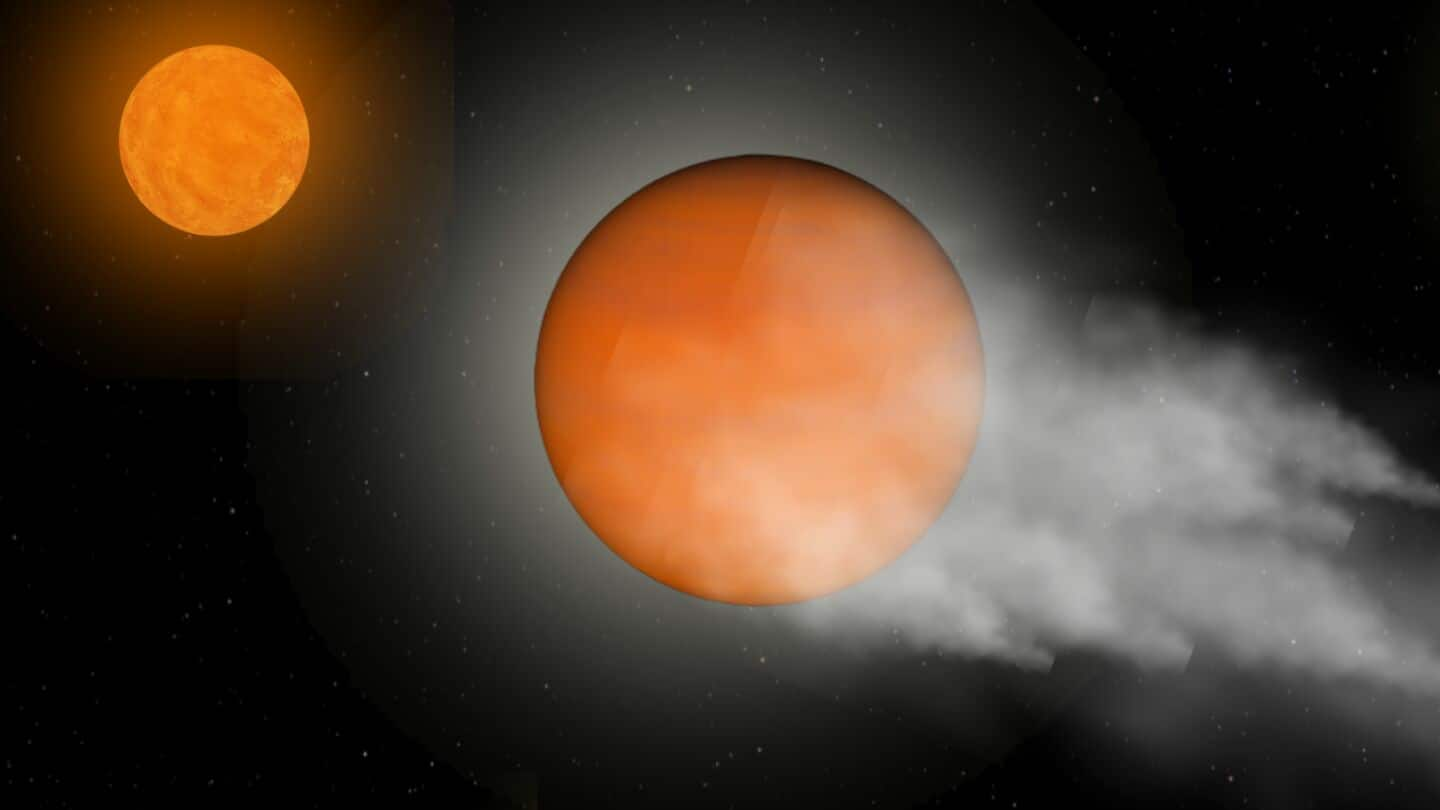
This young sub-Neptune has an unusually clear atmosphere
What's the story
Astronomers have made a groundbreaking advancement in the characterization of a young transiting exoplanet, V1298 Tau b. It is a proto-sub-Neptune (planet outside solar system larger than Earth but smaller than Neptune). The planet is just 10-30 million years old and has an unusually clear and puffy atmosphere. The team, led by Saugata Barat from MIT, used the James Webb Space Telescope (JWST) to study this young world. Their findings were accepted for publication in the Astrophysical Journal.
Atmospheric composition
Hints of complex photochemical processes detected
The team detected strong absorption signals from a range of molecules in the atmosphere of V1298 Tau b. These included water vapor, methane, carbon dioxide, and carbon monoxide. The researchers even discovered hints of complex photochemical processes, with tentative detections of sulfur dioxide (SO2) and carbonyl sulfide (OCS). Despite this rich spectrum, the atmosphere was very metal-poor—about 100 times less enriched than mature sub-Neptunes.
Thermal dynamics
Planet shows less methane than expected
The planet also shows 100 times less methane than expected, possibly due to extreme internal heat as well as strong vertical mixing in the atmosphere. These high internal temperatures are inconsistent with the standard thermal evolution models for sub-Neptune-sized planets. The team also suggested that V1298 Tau b's atmosphere might not be well-mixed and could have metallicity gradients, similar to those seen in solar system giants.
Planetary evolution
Evolutionary processes are still unfolding
Barat said, "We found that V1298 Tau b has a much clearer and metal-poor atmosphere and hotter interior than what observations of sub-Neptunes have previously revealed." He added that this suggests evolutionary processes are still unfolding and could change the planet's atmospheric composition over time.